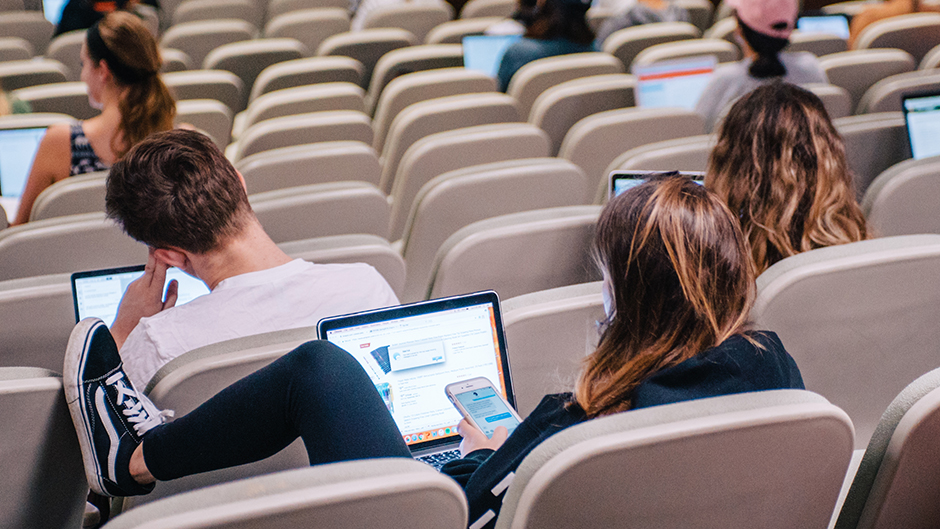Consumer Electronics in Education: Revolutionizing the Learning Experience
In the ever-evolving landscape of education, consumer electronics have emerged as game-changers, offering new ways to enhance learning and teaching. From smart devices and digital tools to the Internet of Things (IoT) and artificial intelligence (AI), the role of technology in education is growing more significant each day. This article explores the impact of consumer electronics in education, the benefits they offer, and the future potential of these tools in transforming how students learn and interact with the world around them.

The Rise of Consumer Electronics in Education
Consumer electronics, which include smartphones, tablets, laptops, and wearables, have revolutionized the traditional classroom. These devices are no longer just tools for personal entertainment; they have become integral to modern education systems. The integration of technology into the classroom has made learning more engaging, interactive, and accessible, benefiting students, teachers, and administrators alike.
1. Smart Devices: Transforming the Classroom
Smartphones, tablets, and laptops have become essential tools in education. These devices give students immediate access to a wealth of information and educational resources, enabling them to learn at their own pace, explore new topics, and collaborate with peers across the globe.
- Tablets and Laptops: Devices like iPads and Chromebooks are often used in classrooms to replace traditional textbooks and worksheets. Students can access digital textbooks, engage with multimedia content, and complete assignments online, creating a more dynamic and interactive learning environment.
- Smartphones: While often viewed as distractions in traditional settings, smartphones have proven to be valuable educational tools. With the right apps, students can access a variety of learning resources, engage in online discussions, and even participate in virtual field trips.
2. Digital Classrooms: The Future of Learning
With the advent of cloud technology, the concept of the digital classroom has become a reality. Students can now access course materials, participate in discussions, and submit assignments from anywhere in the world, making education more flexible and accessible than ever before.
Benefits of Digital Classrooms:
– Accessibility: Students with disabilities or those in remote areas can access education without the barriers of geography.
– Flexibility: Online learning platforms offer students the flexibility to learn at their own pace, catering to different learning styles and preferences.
– Cost-Effectiveness: By eliminating the need for physical textbooks and reducing infrastructure costs, digital classrooms can make education more affordable.
3. The Role of AI in Consumer Electronics for Education
Artificial intelligence is another powerful tool transforming education. AI-powered systems are helping students and educators by providing personalized learning experiences, streamlining administrative tasks, and offering new ways to engage students.
AI for Personalized Learning
AI can analyze a student’s progress and adapt the learning experience based on their strengths and weaknesses. For example, adaptive learning platforms powered by AI can recommend specific lessons, quizzes, or activities that help students focus on areas where they need the most improvement.
AI in Grading and Assessment
AI systems are also streamlining grading, making the process faster and more accurate. Teachers can use AI tools to grade assignments and provide feedback in real time, allowing for more effective and timely assessments.
4. The Internet of Things (IoT): Connecting the Classroom
The Internet of Things (IoT) refers to the network of physical devices that are interconnected and can communicate with each other over the internet. In the education sector, IoT is used to create smart classrooms, where everything from lighting to seating arrangements can be controlled remotely to enhance the learning environment.
- Smartboards and Interactive Displays: These IoT-enabled devices allow teachers to deliver lessons in more interactive and engaging ways. Students can interact with lessons, conduct experiments, and even collaborate with peers in real time.
- Wearable Technology: Devices like fitness trackers and smartwatches can be used to monitor students’ health and well-being, ensuring that they are in an optimal state for learning.
5. The Power of Collaboration: Consumer Electronics and Communication
In addition to personal learning, consumer electronics have also improved communication between students, teachers, and parents. Tools like Google Classroom, Microsoft Teams, and Zoom have become invaluable for remote learning and collaboration.
- Real-Time Communication: Platforms like Zoom allow for live lectures, virtual meetings, and real-time collaboration, breaking down geographical barriers and enabling students to connect with teachers and peers from all over the world.
- Project-Based Learning: Consumer electronics facilitate project-based learning by enabling students to work together on digital platforms, sharing resources and contributing to group efforts even when they are not physically present in the classroom.
6. Benefits of Consumer Electronics in Education
The adoption of consumer electronics in education brings a multitude of benefits for students, teachers, and educational institutions. Here are some of the most notable advantages:
- Enhanced Engagement: Interactive apps and multimedia content keep students engaged and interested in learning. Students are more likely to retain information when it is presented in an interactive and visually appealing way.
- Improved Collaboration: As mentioned earlier, consumer electronics enable students to work together on projects and communicate more effectively, regardless of location.
- Better Access to Resources: Online libraries, research databases, and educational apps offer students access to a vast array of resources that were previously unavailable.
- Global Learning Opportunities: Through online learning platforms, students can access courses and materials from top universities and institutions around the world.
7. Challenges and Concerns
While consumer electronics offer numerous benefits, they also present certain challenges and concerns, such as:
- Digital Divide: Not all students have access to the latest technology, which can create inequality in the educational experience.
- Distractions: While smartphones and other devices can enhance learning, they can also serve as distractions if not managed properly.
- Data Privacy: The increased use of technology in education raises concerns about data security and privacy. Educational institutions must take steps to ensure that student data is protected.
8. The Future of Consumer Electronics in Education
As technology continues to advance, the role of consumer electronics in education will only grow. The future of education is likely to be more personalized, immersive, and interconnected than ever before.
Virtual Reality (VR) and Augmented Reality (AR) in Education
Virtual and augmented reality are already making their way into classrooms. These technologies allow students to experience immersive lessons, such as virtual field trips, simulations, and interactive labs. VR and AR could completely transform the way students learn about complex subjects like science, history, and engineering.
The Role of 5G Technology
The rollout of 5G networks will further enhance the capabilities of consumer electronics in education. With faster internet speeds and lower latency, 5G will enable real-time collaboration, cloud computing, and immersive learning experiences to be more widely accessible.
FAQs
1. How are consumer electronics used in education?
Consumer electronics, such as tablets, smartphones, and laptops, are used in education to provide students with access to digital textbooks, multimedia content, online courses, and interactive learning tools. They also facilitate communication and collaboration between students and teachers.
2. What are the benefits of using AI in education?
AI in education can provide personalized learning experiences, automate administrative tasks, offer real-time feedback, and assist with grading. It can help identify students’ strengths and weaknesses, tailoring the educational content to suit individual needs.
3. What is the Internet of Things (IoT) in education?
The Internet of Things in education refers to the network of smart devices that are interconnected and communicate with each other to improve the classroom environment. This includes smartboards, interactive displays, wearables, and other devices that enhance learning and teaching.
4. What are the challenges of using technology in education?
Some of the challenges include the digital divide, where not all students have access to the necessary technology, distractions from devices, and concerns about data privacy and security.
5. What is the future of consumer electronics in education?
The future of consumer electronics in education looks promising, with advancements in virtual reality, augmented reality, AI, and 5G technology. These innovations will make learning more immersive, accessible, and personalized.
In conclusion, consumer electronics are transforming education by making learning more engaging, interactive, and accessible. As technology continues to evolve, the role of consumer electronics in education will only grow, providing new opportunities for students, teachers, and educational institutions worldwide. By embracing these innovations, we can create a more inclusive and effective learning environment for the future.


